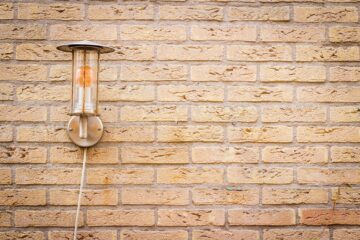If you’re new to painting, tackling a fresh plaster wall can be daunting. But don’t worry – with some know-how and the right supplies, you can quickly achieve a beautiful finish. This blog post will walk you through everything you need about painting new plaster, from preparation to cleanup. You’ll be sure to get the best possible results by following these simple steps. So let’s get started!
Cover all surfaces that you don’t want to be painted with painter’s tape
When painting, it is essential to cover all areas you don’t want to be painted with painter’s tape. This protects the surfaces from being damaged in the painting process and ensures a precise, clean edge where the paint meets adjacent surfaces. To ensure the best results when masking off areas for painting, it is best to press down firmly on the tape so that it sticks securely and avoid using too much or too little tape, as this may lead to bleeding of colour or a messy look around your edges. And always make sure to remove any dust or debris from the target surface before applying painter’s tape – this will also create a better seal. Extra care in these areas will result in a smooth, neat finish and a professional-looking job when you are finished!
Apply a coat of primer to the entire surface that you’re painting
Before applying a coat of primer to any surface, it’s essential to ensure the entire area is properly prepped. This means ensuring that the area is clean and free of dust, cobwebs and other debris and that those areas requiring repairs, such as drywall patching or nail holes, have been addressed. Any surfaces that need sanded should also be taken care of beforehand. Once prep work is complete, most painters will apply a coat of oil- or water-based primer with a brush or roller for smooth surfaces or more textured areas; you may use an airless sprayer. It’s recommended to apply an even layer of primer across the entire surface, taking care not to miss any sections where needed, as this can cause an inconsistent finished look. Having applied the coat of primer, let it fully dry before beginning your painting project.
Once the primer is dry, apply your first coat of paint
After giving your primer the time it needs to dry fully, you are ready to apply your first coat of paint. It is essential to use a quality brush or roller and a primer tailored explicitly to the type of paint you have selected––especially if painting on previously untreated surfaces. Doing so will ensure that your first coat of paint covers evenly and has better adhesion, meaning it is less likely to crack or peel over time. As for technique, always make sure to cut-in around the edges and then roll in long sections, using an ‘M’ or ‘N’ pattern with overlapping passes for best coverage. Give your paint plenty of time to dry before applying additional coats.
Let the first coat of paint dry completely before applying a second coat
Before painting a room or surface with a second coat of paint, the first coat must be completely dry. This means waiting for several hours and checking the finish periodically with a finger by pressing gently on different sections. If the paint still feels wet or tacky, then it needs more time to dry before applying another coat. If the paint is too wet, this can cause the two coats to blend instead of holding distinct layers. Patience is key here, as there are no shortcuts to letting the paint dry. The last thing you want is lumps or clumps of paint, which can happen if you rush through this essential step in your project!
Let the first coat of paint dry completely before applying a second coat
Before painting a room or surface with a second coat of paint, the first coat must be completely dry. This means waiting for several hours and checking the finish periodically with a finger by pressing gently on different sections. If the paint still feels wet or tacky, then it needs more time to dry before applying another coat. If the paint is too wet, this can cause the two coats to blend instead of holding distinct layers. Patience is key here, as there are no shortcuts to let the paint dry. The last thing you want is lumps or clumps of paint, which can happen if you rush through this essential step in your project!
Remove the painter’s tape when you’re finished and enjoy your new look!
Completing a paint job is always very satisfying. After taking all the steps to prepare the surface and having patience with each layer of paint, you should be proud of your work! Before you sit back and admire it, don’t forget those important finishing touches. Removing the painter’s tape is especially critical so that you have the satisfaction of knowing that the edges are crisp and clean. Additionally, removing the tape now can prevent damage like peeling off chunks of fresh paint in the future. So take that extra five minutes to ensure everything looks perfect, and enjoy your new space with pride.
Conclusion
Now that you know the basics of painting, you’re ready to tackle your next project! Just remember to cover all surfaces with painter’s tape, apply a coat of primer, and then paint two coats of your chosen color. Let each coat of paint dry completely before moving on to the next step. When you’re finished, simply remove the painter’s tape and enjoy your new look!


